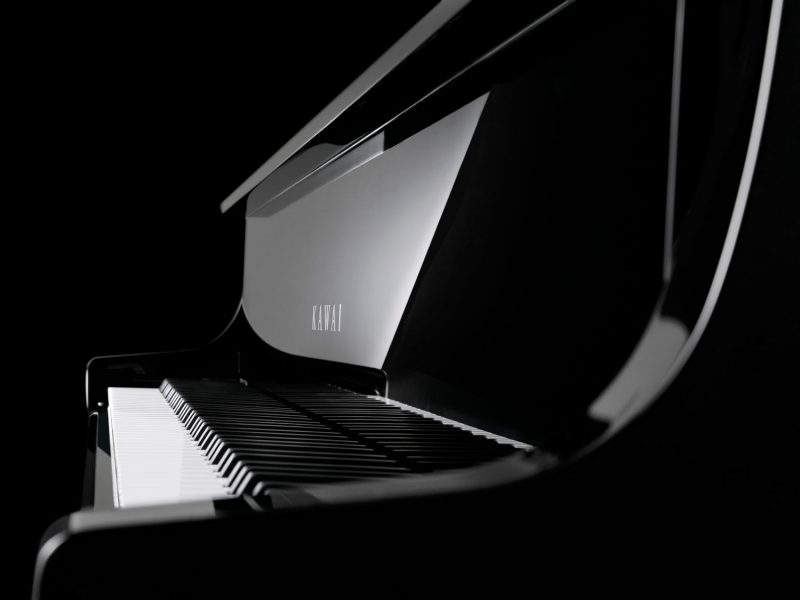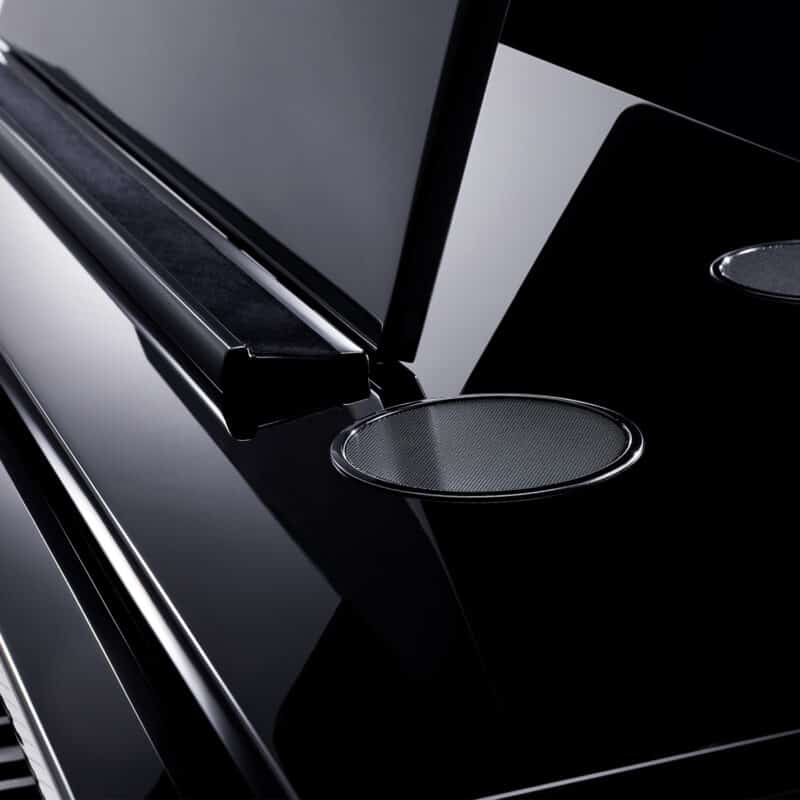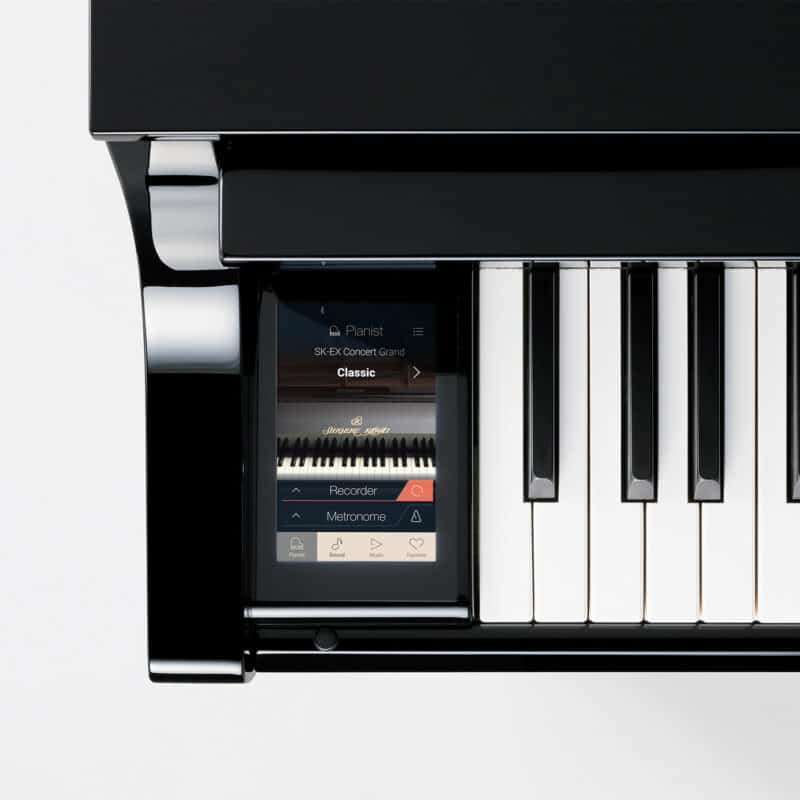Digital pianos have been around since the 1970s, and while they’ve been very popular for a long time among beginners, hobbyists and students, they’ve never really been considered a viable option for a discerning pianist.
Thanks to recent innovations in Hybrid digital piano technology, that’s no longer the case. In today’s video and article, we’ll be looking at two of the most advanced hybrid digital pianos currently available as we compare Kawai’s flagship models – the Kawai Novus NV10 vs NV5.
We’ve already done individual reviews for each piano, so if you’d like to see a hyper-specific deep dive into each piano, be sure to check those out. This article is instead designed to answer one question – which one should you choose?
We’ll be covering the exact differences between these two industry-leading instruments in the event that you’re in the market for a top-flight hybrid digital piano, whether as a replacement for an acoustic piano or simply due to the inherent perks of a digital piano, you’ll be able to determine which instrument will be a better fit for you.
Background Information: Kawai NV10 vs NV5

Our individual reviews of the Kawai Novus NV10 vs NV5 are among the most commented-on videos on our YouTube channel – there’s no doubt that these pianos have elicited a ton of interest and excitement from prospective piano owners and enthusiasts. A detailed comparison between the two then should not only be useful but is probably necessary.
First, let’s get into a general overview of the Novus series in the event that this is your first time coming across these pianos.
The Kawai Novus NV10 hit the market first and the whole idea here was this would be the first time Kawai would be incorporating a full acoustic piano action – the Millennium III Hybrid Grand piano action no less – into a digital piano, officially earning the designation of being a hybrid instrument.
This is the same acoustic grand piano action you’ll find in Kawai’s GL, GX and even Shigeru Kawai series instruments (the Shigeru’s of course receive a much higher level of refinement.) The only difference is that this version of the action has a synthetic felt hammer that passes through an IHSS optical sensor as opposed to a wooden hammer that strikes strings.
This action features ABS carbon fiber and extended-length wooden key sticks for maximum control.
It was around this time that their partnership with Onkyo began, which elevated their sound processing, amplifiers and speaker configurations to new levels of sophistication.
The NV5 followed more than a year later, and the reception seemed to eclipse the already highly regarded NV10 – our President and resident piano reviewer here at Merriam Pianos, Stu Harrison, actually has one at his home.
The NV5 uses a full-scale upright version of the Millennium III action – the same one you’ll find in acoustic upright pianos such as the Kawai K Series uprights like the K300 and K500.
Kawai Novus NV10 vs NV5 – Similarities & Differences
In both cases, we have modern acoustic piano actions interacting with advanced optical sensors which then send information, such as how hard or fast the key has been played, to a tone engine. In both cases we also have an Onkyo designed amplification technologies (including headphone amplifier) and speaker system delivering superbly clear tone and a room-filling 135 watts of speaker power.
The speaker systems themselves however are far from the same. On the NV10, Kawai has gone with a multi-speaker system consisting of four top speakers two dome tweeters on the top of the instrument, and two large woofers underneath the keyboard.
The NV5 has 4 top speakers and 2 dome tweeters as well, but instead of the woofers, it has the Kawai TwinDrive Soundboard Speaker System – this is a real solid spruce soundboard on the back of the piano with two Onkyo magnets driving it!
Due to these speaker differences, even though the power rating on these two instruments is the same as the tone engines, the playing experience is very different – excellent in both cases, but different.
Before we get too far into that, we need to devote some time to a discussion of the sound engine that both instruments share,
Kawai Digital Piano Sound – Speaker System & Sound Engine

Both the NV10 and NV5 are actually equipped with dual sound engines, the more intriguing of the two being Kawai’s new Pianist Mode SK-EX Rendering engine. This rendering piano sound engine combines multi-channel sampling (88 key individual) of the Shigeru Kawai SK-EX Concert Grand Piano with cutting-edge resonance modelling technology.
What this means is that Kawai has meticulously recorded their SKEX via multiple channels at a variety of dynamic ranges in every single note to generate a sample, which is then combined with acoustic rendering to recreate other sonic artifacts such as cabinet resonance and damper resonance.
With this sound engine engaged, the polyphony is unlimited courtesy of the modelling technology, which adds credence to the fact that this is Kawai’s most advanced sound engine yet. There are also 10 different Rendering Characters to choose from with different presets.
Kawai also makes their Virtual Technician feature available which allows the player to go in and edit adjustable parameters related to the tone, from minor tweaking of things like reverb to large-scale changes of hyper-specific parameters including things like aliquot resonance, key volume and undamped string resonance
The secondary sound engine Kawai makes available here is the Harmonic Imaging XL engine, and this playing mode is referred to as Sound Mode. This engine offers you a large selection of tones such as ePianos, strings, organs, some very nice harpsichords and various other instruments.
This engine also offers 88 individually sampled notes but with 256-note max polyphony. While that may sound like quite the drop-off from the unlimited polyphony of the Rendering engine, in practice, 256 notes of polyphony are going to be enough for virtually all applications.
Convenient Features & USB and Bluetooth MIDI Connectivity

As we’ve mentioned, the brains on these two pianos are the same. Both pianos have a host of built-in piano music, as well as a large array of lesson songs. The cheekblock LCD touchscreen display is exactly the same and very easy to navigate.
In terms of connectivity, both pianos are USB to device as well as USB to host which lets you record locally (SMF and WAV files). There’s also Bluetooth audio as well as Bluetooth MIDI. Bluetooth Audio lets you stream and playback music from your smartphone or tablet directly through the piano’s high-end speaker system, dwarfing the sonic capabilities of anything outside of a legit audiophile home stereo setup.
Dual headphone jacks along with a 1/4” line in and a 1/4” line out round out the connectivity.
Both pianos have all of your expected functions such as dual, split, four hands mode and transpose as well as a metronome and a host of built-in drum rhythms.
Which Hybrid Digital Piano Should You Choose?
Why would somebody choose an NV10 over an NV5 or vice versa? Although, this question can probably be further distilled to be; why spring for the NV10? There is a significant price difference between these two despite many features being the same.
The first reason would be the action – while both are authentic acoustic piano actions, the NV5 has an upright piano action, while the NV10 has a grand piano keyboard action.
The geometry of an upright versus a grand piano action is of course quite different, and as such, these two actions do behave and feel different. If you’re looking for a true grand piano experience and substitute, the NV10 is going to be the better option for you. Dovetailing with this is the true grand piano damper mechanism you get with the NV10 with authentically weighted soft, sostenuto and damper pedals.
If on the other hand you really enjoy playing on a great upright action, you’re probably going to prefer the NV5 as your digital instrument hybrid.
The second big difference is how the sound is actually reaching your ear. These differences may not be pronounced in the video, but in person, they’re quite significant. That’s not necessarily to say that one sounds ‘better’, just different.
The sound on the NV10, as with a real grand piano, sounds more distant in a sense and there’s a large sense of room ambience as well. The treble also seems a little bit more dispersed.
Over on the NV5, the sound is much more direct, likely due to a set of tone ports located on top of the piano. This more immediate sound is really going to appeal to some players.
Of course, another reason they sound different is the presence of a solid spruce soundboard on the NV5 versus woofers on the NV10. The NV10 has a punchier bass, but the soundboard delivers a warmer bass on the NV5, and at a lower dynamic range, the bass response sounds much wider on the NV5.
So ultimately, this question really comes down to whether you prefer the immediate and more intimate tonal response of the NV5, versus a more distant sound with more ambient room tone (like a 6-foot grand piano) that the NV10 provides.
The upright versus grand action and the big tonal differences are probably the biggest reasons anyone would choose one over the other, but there’s another interesting consideration as well; the touch curve.
In our opinion, the NV10 requires a little bit more tweaking inside of the Virtual Technician function versus the NV5, which right out of the box has a more authentic touch response. This is likely due to differences in the factory settings.
Final Thoughts
Without question, these are two of the most advanced hybrid instruments available on the market today. Despite similar-looking specs sheets, however, they really do offer divergent musical experiences.
The Kawai Novus NV10 hybrid digital piano is really tough to beat if you’re looking for a true grand piano replacement without the maintenance requirements of an acoustic piano, while the NV5 is going to hit the nail on the head for people who love a great upright piano experience.
Both available in a striking ebony polish finish with slow-fall fallboard and large music rest, along with great warranty coverage, the piano shoppers of today are truly fortunate to have such incredible options to choose from.

